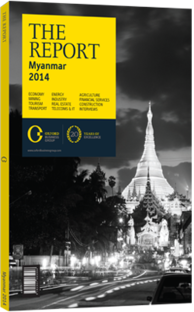Two if by sea: For Myanmar’s trade to flourish, its ports need a serious upgrade
Yangon Port is in some ways still decidedly 19th-century. Cargo handling is manual and paperwork old-fashioned – a shipper must submit copies of each document to three separate offices. There is no single window and no electronic reporting. Bills of lading are inaccessible online and tracking is done by hand, making it hard to know the precise location of containers. Some even go missing. Machines, where they exist, are often obsolete; training is outmoded; capacity is low.
Other inefficiencies abound. On paper, the port has a draught of nine metres; in practice, it is usually less. Two semi-submerged bars, the Inner Bar and Outer Bar, make navigation tricky and demand an old-time sailor's sense of tide. Ships can only berth during high water and daylight and, if they miss the crucial window of time, must wait long hours until the waters recede.
This bottleneck may hold the country back. Unless Myanmar is linked to global trading routes, its reforms cannot be as effective. Links to the world economy are crucial if it is to follow its neighbours’ footsteps and enjoy export-led growth and the prosperity that follows. With the port's limitations, this sort of integration is still crimped and, unless the right policies are enacted – and quickly – may be hard to achieve at all.
Feeder Port
Judging by geography alone, Myanmar should have a robust maritime sector. Well-nested between India and South-east Asia, it has a long coastline, an extensive inland water system, an overland cargo route to South-west China and nine existing ocean ports. Its crossroads location is ideal for port development. Years of isolation, sanctions and poor management, however, have kept its maritime infrastructure from development, and indeed let it fall into disrepair.
Major global lines therefore dock their motherships in Malaysia or Singapore, and send feeder vessels to Yangon Port. Because of the bars, they have to enter at below capacity. During the peak months of March and April, the port throngs with congestion, and it is difficult to ship at all. In UNCTAD's 2013 Shipping Connectivity Index, a measure of a country's integration with the networks of major global shipping lines, Indonesia scored 27.4; Thailand, 38.3; Vietnam, 43.3; Malaysia, 98.2; and Singapore, 106.9. Myanmar's scored 6.0.
Other ports cast forth a glint of hope. Thilawa, though within the Outer Bar, has one metre of draught on Yangon. Ground transport to and from it, though, is tough, costly, and thus uneconomic for most shipments. Until roads are fixed, the Thilawa option will appeal mostly to companies operating in the port's special economic zone. The same holds true for Dawei and Kyaukpyu.
Construction
Yangon has not been all quiet. New wharfs are being constructed, and other projects are on deck. In 2010, a $50m contract was signed to redevelop the Hteedan Wharf. The first 183 metres of the project, a precast concrete structure finished in 2011, replaced an old rice jetty. The Myanma Port Authority has invited bids to redevelop more of the port area, identifying eight sections of waterfront for investment.
Yet much more needs to be done, and that will require more cash from abroad. To attract this money, the government will have to ensure its regulations are properly written and enforced. So far its intentions seem benign, and legislators and bureaucrats are being supportive. In March 2013, licences were scrapped for 166 import items and 152 export ones, greatly simplifying the paperwork for many shipments.
The question is whether this sort of reform will continue. The new Foreign Investment Law already restricts foreign participation in the sector. Only with the government's permission can roads and ports be built, shipyards operated, and foreign shipping lines represented. Any construction or maintenance of ships must involve a local partner. According to one shipping executive, local agents are pushing to require joint ventures when international shipping firms incorporate locally.
Unless restrictions against foreign players are eased, the needed maritime investments are not likely to happen in the right way or on the proper scale. That might leave Myanmar relatively cut off from trade, still effectively isolated despite all the hard-bought recent reforms.
You have reached the limit of premium articles you can view for free.
Choose from the options below to purchase print or digital editions of our Reports. You can also purchase a website subscription giving you unlimited access to all of our Reports online for 12 months.
If you have already purchased this Report or have a website subscription, please login to continue.

